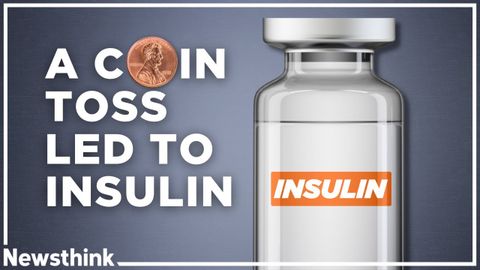
Subtitles & vocabulary
How a Lucky Coin Toss Led to the Discovery of Insulin
00
joey joey posted on 2021/06/13Save
Video vocabulary
diabetes
US /ˌdaɪəˈbitɪs, -tiz/
・
UK /ˌdaɪəˈbi:ti:z/
- Noun (Countable/Uncountable)
- Illness where there is too much sugar in the blood
- A form of diabetes, usually diagnosed in children and young adults, in which the body does not produce insulin.
B2
More describe
US /dɪˈskraɪb/
・
UK /dɪ'skraɪb/
- Transitive Verb
- To tell the appearance, sound, smell of something
- To trace the outline of; to draw.
A1TOEIC
More disease
US /dɪˈziz/
・
UK /dɪˈzi:z/
- Noun (Countable/Uncountable)
- Illness that affects a person, animal, or plant
- A disorder of structure or function in a plant, especially one caused by a pathogen.
- Transitive Verb
- To affect with disease; to corrupt or sicken.
A2TOEIC
More research
US /rɪˈsɚtʃ, ˈriˌsɚtʃ/
・
UK /rɪ'sɜ:tʃ/
- Verb (Transitive/Intransitive)
- To study in order to discover new ideas and facts
- To study the market relating to marketing products and services.
- Noun (Countable/Uncountable)
- Study done to discover new ideas and facts
- A particular area or topic of study.
A2TOEIC
More Use Energy
Unlock All Vocabulary
Unlock pronunciation, explanations, and filters
